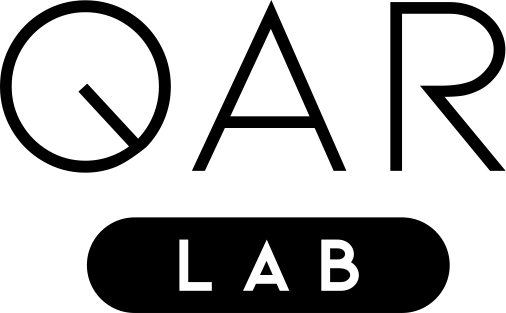Paper-QO
Modifying the quantum-assisted genetic algorithm
Thomas Gabor, Michael Lachner, Nico Kraus, Christoph Roch, Jonas Stein, Daniel Ratke, Claudia Linnhoff-Popien
Abstract
Based on the quantum-assisted genetic algorithm (QAGA) [11] and related approaches we introduce several modifications of QAGA to search for more promising solvers on (at least) graph coloring problems, knapsack problems, Boolean satisfiability problems, and an equal combination of these three. We empirically test the efficiency of these algorithmic changes on a purely classical version of the algorithm (simulated-annealing-assisted genetic algorithm, SAGA) and verify the benefit of selected modifications when using quantum annealing hardware. Our results point towards an inherent benefit of a simpler and more flexible algorithm design.
A Flexible Pipeline for the Optimization of Construction Trees
M. Friedrich, C. Roch, S. Feld, C. Hahn, and P. Fayolle
Abstract
CSG trees are an intuitive, yet powerful technique for the representation of geometry using a combination of Boolean set-operations and geometric primitives. In general, there exists an infinite number of trees all describing the same 3D solid. However, some trees are optimal regarding the number of used operations, their shape or other attributes, like their suitability for intuitive, human-controlled editing. In this paper, we present a systematic comparison of newly developed and existing tree optimization methods and propose a flexible processing pipeline with a focus on tree editability. The pipeline uses a redundancy removal and decomposition stage for complexity reduction and different (meta-)heuristics for remaining tree optimization. We also introduce a new quantitative measure for CSG tree editability and show how it can be used as a constraint in the optimization process.
28th International Conference on Computer Graphics, Visualization and Computer Vision (WSCG)
A Quantum Annealing Algorithm for Finding Pure Nash Equilibria in Graphical Games
Abstract
We introduce Q-Nash, a quantum annealing algorithm for the NP-complete problem of finding pure Nash equilibria in graphical games. The algorithm consists of two phases. The first phase determines all combinations of best response strategies for each player using classical computation. The second phase finds pure Nash equilibria using a quantum annealing device by mapping the computed combinations to a quadratic unconstrained binary optimization formulation based on the Set Cover problem. We empirically evaluate Q-Nash on D-Wave’s Quantum Annealer 2000Q using different graphical game topologies. The results with respect to solution quality and computing time are compared to a Brute Force algorithm and the Iterated Best Response heuristic.
Published in 20th International Conference on Computational Science (ICCS 2020), 2020, p. 12. doi:10.1007/978-3-030-50433-5_38
Approximating Archetypal Analysis Using Quantum Annealing
S. Feld, C. Roch, K. Geirhos, and T. Gabor
Abstract
Archetypes are those extreme values of a data set that can jointly represent all other data points. They often have descriptive meanings and can thus contribute to the understanding of the data. Such archetypes are identified using archetypal analysis and all data points are represented as convex combinations thereof. In this work, archetypal analysis is linked with quantum annealing. For both steps, i.e. the determination of archetypes and the assignment of data points, we derive a QUBO formulation which is solved on D-Wave’s 2000Q Quantum Annealer. For selected data sets, called toy and iris, our quantum annealing-based approach can achieve similar results to the original R-package archetypes.
28th European Symposium on Artificial Neural Networks, Computational Intelligence and Machine Learning (ESANN 2020)
The Dynamic Time Warping Distance Measure as Q U BO Formulation
S. Feld, C. Roch, T. Gabor, M. To, and C. Linnhoff-Popien
Abstract
Dynamic Time Warping (DTW) is a representative of a distance measure that is able to calculate the distance between two time series. It is often used for the recognition of handwriting or spoken language. The metaheuristic Quantum Annealing (QA) can be used to solve combinatorial optimization problems. Similar to Simulated Annealing it seeks to find a global minimum of a target function. In order to use specialized QA hardware, the problem to be optimized needs to be translated into a Quadratic Unconstrained Binary Optimization (QUBO) problem. With this paper we investigate whether it is possible to transfer the DTW distance measure into a QUBO formulation. The motivation behind is the hope on an accelerated execution once the QA hardware scales up and the aspiration of gaining benefits due to quantum effects that are not given in the classical calculation. In principle, we find that it is possible to transform DTW into a QUBO formulation suitable for executing on QA hardware. Also, the algorithm returns not only the minimum total distance between two sequences, but also the corresponding warping path. However, there are several difficulties that make a manual intervention necessary.
IEEE 5th International Conference on Computer and Communication Systems (ICCCS 2020)
Approximate Approximation on a Quantum Annealer
Irmengard Sax, Sebastian Feld, Sebastian Zielinski, Thomas Gabor, Claudia Linnhoff-Popien, Wolfgang Mauerer
Abstract
Many problems of industrial interest are NP-complete, and quickly exhaust resources of computational devices with increasing input sizes. Quantum annealers (QA) are physical devices that aim at this class of problems by exploiting quantum mechanical properties of nature. However, they compete with efficient heuristics and probabilistic or randomised algorithms on classical machines that allow for finding approximate solutions to large NP-complete problems. While first implementations of QA have become commercially available, their practical benefits are far from fully explored. To the best of our knowledge, approximation techniques have not yet received substantial attention. In this paper, we explore how problems’ approximate versions of varying degree can be systematically constructed for quantum annealer programs, and how this influences result quality or the handling of larger problem instances on given set of qubits. We illustrate various approximation techniques on both, simulations and real QA hardware, on different seminal problems, and interpret the results to contribute towards a better understanding of the realworld power and limitations of current-state and future quantum computing.
Published in ,. ACM, New York, NY, USA, 9 pages
Optimizing Geometry Compression using Quantum Annealing
S. Feld, M. Friedrich, and C. Linnhoff-Popien
Abstract
The compression of geometry data is an important aspect of bandwidth-efficient data transfer for distributed 3d computer vision applications. We propose a quantum-enabled lossy 3d point cloud compression pipeline based on the constructive solid geometry (CSG) model representation. Key parts of the pipeline are mapped to NP-complete problems for which an efficient Ising formulation suitable for the execution on a Quantum Annealer exists. We describe existing Ising formulations for the maximum clique search problem and the smallest exact cover problem, both of which are important building blocks of the proposed compression pipeline. Additionally, we discuss the properties of the overall pipeline regarding result optimality and described Ising formulations.
IEEE Workshop on Quantum Communications and Information Technology 2018 (IEEE QCIT 2018), 2018, pp. 1-6
Torwards understanding Approximation Complexity on a Quantum Annealer (Extended Abstract)
I. Sax, S. Feld, S. Zielinski, T. Gabor, C. Linnhoff-Popien, and W. Mauerer
Extended Abstract
Many industrially relevant problems can be deterministically solved by computers in principle, but are intractable in practice, as the seminal P/NP dichotomy of complexity theory and Cobham’s thesis testify. For the many NP-complete problems, industry needs to resort to using heuristics or approximation algorithms. For approximation algorithms, there is a more refined classification in complexity classes that goes beyond the simple P/NP dichotomy. As it is well known, approximation classes form a hierarchy, that is, FPTAS 


1st International Symposium on Applied Artificial Intelligence (ISAAI’19)
Cross Entropy Hyperparameter Optimization for Constrained Problem Hamiltonians Applied to QAOA
Abstract
Hybrid quantum-classical algorithms such as the Quantum Approximate Optimization Algorithm (QAOA) are considered as one of the most encouraging approaches for taking advantage of near-term quantum computers in practical applications. Such algorithms are usually implemented in a variational form, combining a classical optimization method with a quantum machine to find good solutions to an optimization problem. The solution quality of QAOA depends to a high degree on the parameters chosen by the classical optimizer at each iteration. However, the solution landscape of those parameters is highly multi-dimensional and contains many low-quality local optima. In this study we apply a Cross-Entropy method to shape this landscape, which allows the classical optimizer to find better parameter more easily and hence results in an improved performance. We empirically demonstrate that this approach can reach a significant better solution quality for the Knapsack Problem.
Accepted for publication, arXiv preprint arXiv:2003.05292 (2020)

